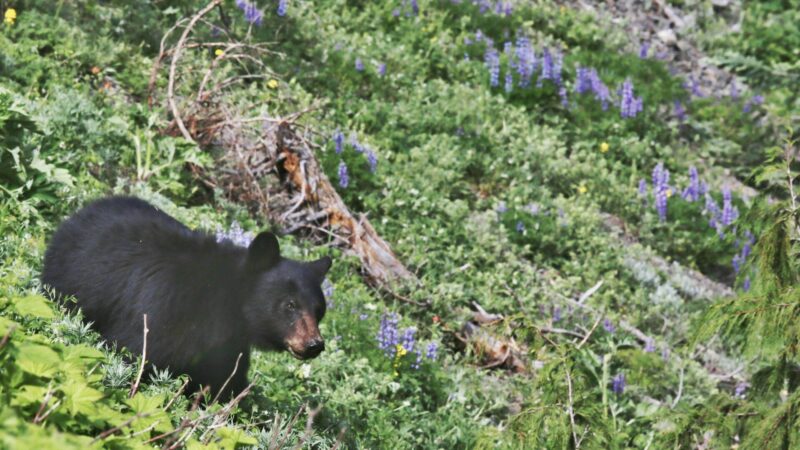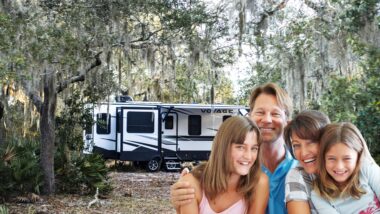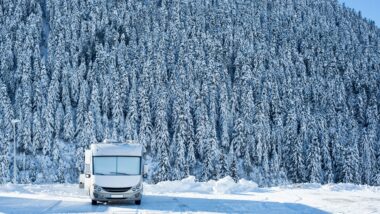Table of Contents Show
Washington State has three National Parks: Mount Ranier, North Cascades, and Olympic. Today, we will share more about Olympic National Park and the diverse wildlife you can find there due to its varied ecosystems and habitats.
Let’s dive in and learn more about what you might spot when you look for wildlife!
Where Is Olympic National Park?
Located on the Olympic Peninsula of Washington State, Olympic National Park protects nearly a million acres of mountains, rainforests, coastline, and their varied habitats. The park sits just west of Seattle, but because of the wild landscape, it takes about three hours to drive from the city to the main visitor center in Port Angeles.
Highway 101 circles Olympic National Park. From the park’s main visitor center at the north entrance to the Kalaloch Ranger Station in the southwest part of the park is about 90 miles.
About Olympic National Park
Originally, the park was designated as Mount Olympus National Monument in 1909 by President Theodore Roosevelt. Later, in 1938, President Franklin D. Roosevelt re-designated it as a national park. Olympic National Park is also an International Biosphere Reserve and a World Heritage Site.
The park protects three distinct ecosystems. One, in particular, is the primeval forest, one of the last remaining tracts in the lower 48 states. Because of the vast range in elevation and climate, you’ll find marine mammals like whales and dolphins offshore, Roosevelt Elk in the rainforests, and black bears in the subalpine mountains. Rivers and lakes are home to numerous fish species, amphibians, and reptiles.
You could spend weeks exploring Olympic National Park because of its vast size. Typical activities include boating, fishing, tide pooling, camping, hiking, backpacking, stargazing, and wildlife viewing. In the winter months, visitors enjoy snowshoeing, cross-country and downhill skiing, snowboarding, and tubing.

Is the Olympic National Park Wildlife Dangerous?
Some dangerous animals live in Olympic National Park. Hikers and backpackers must be especially cautious and alert as large land mammals, like black bears, Roosevelt elk, and cougars, roam around. But as long as you remain at a safe distance, you don’t need to worry about encounters with these animals.
The National Park Service suggests visitors stay at least 100 yards from predators like bears and wolves. Use binoculars to see animals up close. Don’t try to approach to get that Instagram-worthy photo.
Visitors should always carry bear spray and know how to use it. Park rangers will offer demonstrations at various times and locations.
Wildlife to Watch for in Olympic National Park
Although you’re never guaranteed to see animals, there is Olympic National Park wildlife you’re likely to see on a visit, depending on the time of year.
Most people don’t explore all three of the ecosystems in the park because they’re spread across over 922,000 acres. But if you can spend plenty of time on the Olympic Peninsula, you’ll be able to see the varied wildlife Olympic is known for.
Black Bear
Black bears are found all over the United States. They’re smaller than brown and grizzly bears, with females weighing between 100 and 400 pounds and males weighing between 250 and 600 pounds.
They roam the mountains, forests, and coastal regions of Olympic National Park. You might find them grazing for nuts and seeds or eating carcasses of elk or deer.
Pro Tip: Stay safe during your park adventures and make sure to ‘Bear Aware’

Roosevelt Elk
The largest unmanaged herd of Roosevelt elk in the Pacific Northwest lives in Olympic National Park. They’re also the largest elk in North America, with females weighing between 600 and 700 pounds and males weighing up to 1,100 pounds. In the rainforest, you’ll likely see these mammals feeding on ferns, shrubs, and lichens.

Blacktail Deer
The most common animal in Olympic National Park is the blacktail deer. You’ll find this species all over the park, from the forests to the valleys. Mule deer live throughout the western United States, and the blacktail deer are a subspecies of this mammal. They’re close cousins to the white-tailed deer of the eastern United States.
Cougar
One Olympic National Park wildlife species you’re unlikely to encounter is the cougar. They’re reclusive and elusive. Only lions, tigers, and jaguars are larger than the cougar.
These isolated mammals live in the mountains and forests of the park. Although you won’t likely see these creatures, you might spot scratch mounds and tracks on backcountry trails.
Sea Otters
Moving out to the seashore, visitors can see a variety of marine mammals. Sea otters float around in the Pacific Ocean, foraging within the large kelp beds. They’re kin to the river otters but much larger, weighing 50 to 100 pounds. Often you’ll see sea otters floating on their backs.
Harbor Seals
Another Olympic National Park wildlife species along the coast is the Pacific harbor seal. They live here year-round, feasting on numerous types of fish. Typically staying near the shore, harbor seals often play and bob in the water.
Gray Whales
How would you like to give birth to a 1,100 to 1,500-pound baby? Gray whales do just that after a gestation period of 11 to 12 months.
Thanks to protective measures, these once critically endangered whales are now thriving in the Pacific Coast. Measuring 50 to 60 feet long, these marine mammals can weigh over 30 tons.
Keep in Mind: Did you know there’s a US National Park in Canada? So which one is it and why is it there? Let’s find out!
Where Is the Best Place to Spot Olympic National Park Wildlife?
Elk roam throughout Olympic National Park. You’ll find them in the meadows, forests, and rainforests. The Hoh Rain Forest is probably the best location since a herd remains in this area year-round. September is the prime time to hear the males bugling during mating season.
Blacktail deer are also seen throughout the park. Look for them at the edge of forests and near meadows at dawn and dusk. Drive cautiously and slowly during these times of the day, as you may encounter an elk or deer crossing.
If you visit Olympic National Park during the late spring and summer, you have the best chance of viewing gray whales along the coast. They’re en route to their summer feeding grounds up north and remain around the Olympic Peninsula for a few weeks. Try to spot them at the mouths of the Hoh and Quillayute rivers.

Spot the Diverse Wildlife of Olympic National Park
In addition to these Olympic National Park wildlife species, there are approximately 300 species of bird that live here. From peregrine falcons to sooty grouse to bald eagles to winter wrens, this national park is a birder’s paradise.
Whether you want to spot a sea otter playfully swimming in the ocean or a massive Roosevelt elk standing tall and proud in the Hoh Rain Forest, there are many opportunities to spot the diverse wildlife of Olympic National Park.
Wildlife viewing is a top activity for a reason. So the next time you’re heading to the Pacific Northwest, spend a few days enjoying the varied ecosystems of this special region.
What animal are you most excited to see on your next trip?






